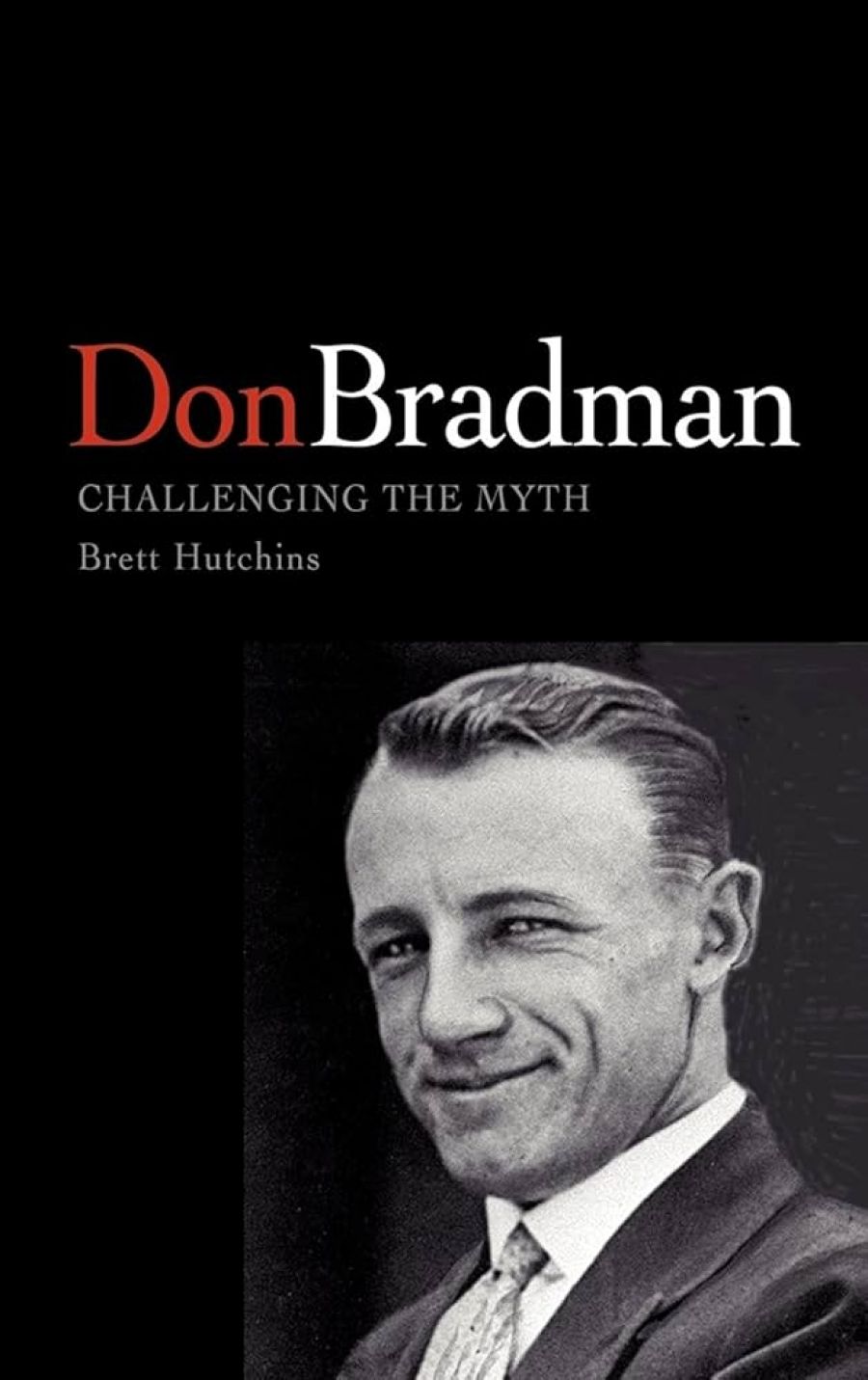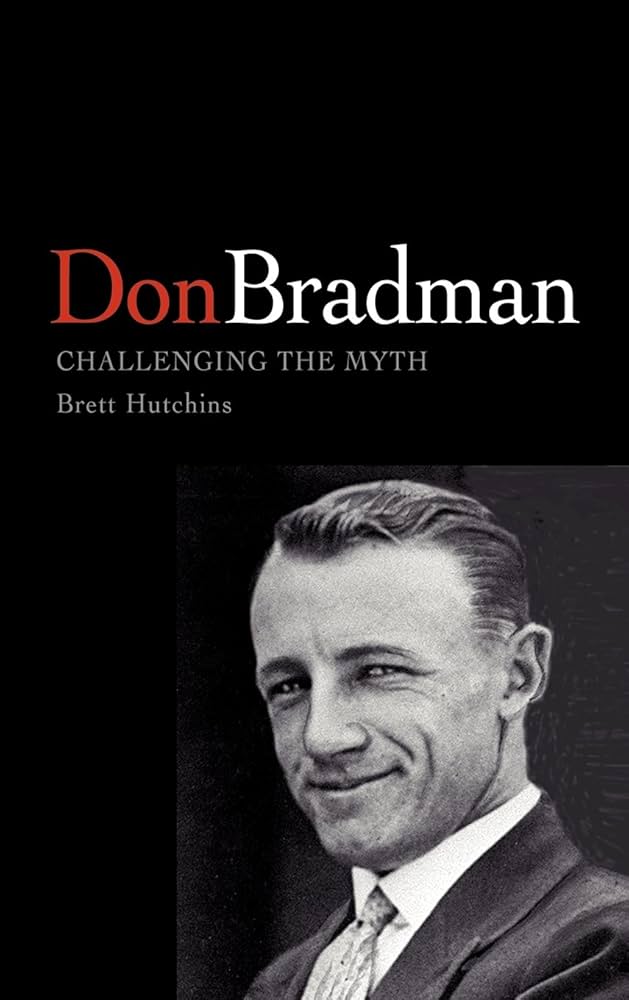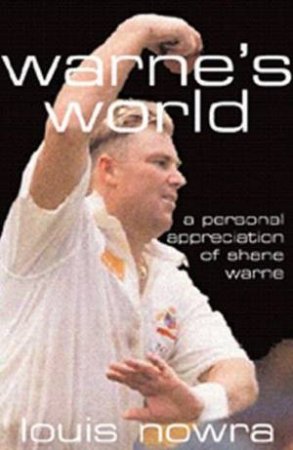
- Free Article: No
- Contents Category: Sport
- Review Article: Yes
- Article Title: A Matter of Gravitas
- Online Only: No
- Custom Highlight Text: In early 1993 I was several months into a new job at the University of London. I must have been very preoccupied by my unaccustomed responsibilities because, when I ducked home to an empty flat at round about midday for a quick sandwich, I suddenly realised that the First Test was more than an hour old and that I’d completely forgotten about it. Naturally, all thoughts of hunger shelved, I turned on the television – to see Shane Warne tossing the ball from hand to hand and conferring with Allan Border. You needed only thirty years of cricket watching and playing experience to realise instantly that Warne was about to bowl his first over of the match. And that was how – settling in to sneak a look during my lunch break – I saw that ball.
- Book 1 Title: Don Bradman
- Book 1 Subtitle: Challenging the myth
- Book 1 Biblio: CUP, $29.95hb, 223 pp
- Book 1 Cover Small (400 x 600):

- Book 1 Cover (800 x 1200):

- Book 2 Title: Warne’s World
- Book 2 Biblio: Duffy & Snellgrove, $19.95 pb, 248 pp
- Book 2 Cover Small (400 x 600):

- Book 2 Cover (800 x 1200):

He gripped the ball for a standard leg break and moved in to bowl with that deceptively casual stroll of his. The ball left his hand and from the moment it did, he could tell it was a good delivery as it curled from left to right like the amiable drift of a frisbee. It landed outside the leg stump and then, suddenly animated, jagged and jumped back the other way. Gatting hopefully prodded at the ball as it turned almost at right angles from right to left, but it whipped past his bat and hit off stump. Gooch, standing at the bowler’s end, could hardly believe what he saw. Gatting’s reaction was of astonishment. The ball had spun so far that he thought the wicketkeeper might have accidentally hit the stumps … Later that night a still-confounded Gatting asked Warne what had happened. ‘You just missed a leg break, buddy,’ replied Warne, but it was more than just a leg break … It was … ‘the ball of the century’ and ‘the best ball ever seen in cricket history’.
That moment – utterly sensational in a way we would come to realise was somehow characteristic of the man –encapsulated much of what would make Warne fascinating, exciting, exasperating, irresistible for the decade that followed. As Nowra rightly observes: ‘That single ball was to dramatically change Warne’s life forever.’
Like Bradman, Warne is a cricketing genius. When he bowled to Gatting, there were only six and a half years of the twentieth century left, yet, grasping that slim opportunity, Warne became, in the official judgment of the highest court in international cricket (Wisden), one of that century’s five greatest cricketers. Unlike Bradman, however, Warne has not been, and will not be, lauded by prime ministers or cited as one of the greatest Australians. Although his prodigious feats belong in the same rarefied realms as those of the Don, he is as likely to be booed as he is to be celebrated when he walks on to the field or appears in public – a fate that never remotely overtook Bradman.
Part of the reason for this is made clear in Brett Hutchins’s challenge to the Bradman myth. Hutchins convincingly shows that, despite what we may assume about the man and the era in which he played, the Bradman phenomenon was carefully constructed, and it was a construction that, while heavily contributed to by the media and his biographers (not to mention by the present prime minister, as Hutchins several times points out), was also astutely supervised and directed by the Don himself. Hutchins rejects the idea that Bradman played in a ‘golden age’ – that is, one unsullied by commercialism – to which the highly professionalised contemporary game stands in tawdry contrast, in favour of the ‘unappealing notion’ that ‘commercial development’ from Bradman’s time to the present might be found to be ‘continuous’:
The Don is a measure for sporting integrity precisely because he is rarely thought of in terms of financial calculation. The ‘golden age’ notion … implies that an unbridgeable chasm exists between cricket in the 1930s and 1940s and the highly commercialised contemporary game, instead of acknowledging continuities between these eras … [His continuing] marketability is structured through an image of a golden age where Bradman stands above all others … Yet, other interpretations of the Don tell us that he was at the vanguard of commercial self-promotion and professionalism during his playing career. He may have played for love, but love is not the only thing that cricket helped him accumulate.
Hutchins dismantles the ‘boy from the bush’ myth (so beloved of Australian sporting fans – Dougie Walters, Tony Lockett et al.) and various other accretions of the Bradman legend with a typically relentless, though impressively courteous, and mostly rather dour application to the task. It is in a way, as Hutchins recognises, a hopeless task because the Bradman legend is powerful, long-established and meticulously tended, not so much a moving as an impregnable target. Where necessary, accommodations are made. So, for example, the teetotal, non-smoking, physically fragile, apparently unsociable Bradman scarcely fitted the Australian masculine sporting celebrity image; he was, like ‘Weary’ Dunlop, ‘emphatically not a “mate”‘. Yet ‘a collective, albeit sometimes unconscious, effort is made to make him fit’. Which brings us back to Warne, who is emphatically a mate, but towards whom, as Louis Nowra points out, ‘there is now an ambiguous attitude … even in Australia’.
Nowra’s brilliant analysis of Warne’s bayside suburban upbringing, with its Neighbours-like blandness, makes you wonder if Warne might have been too quintessentially close to an Australian capital city, middleclass suburban stereotype to be tolerated when he became a genius. Nowra explains:
T]hese bayside suburbs … unmistakably created Warne’s social limits and flat cultural horizons. The bayside sculptured and shaped him and nothing else has been able to take its place. The boy who wandered its streets and swam in the sea and understood that within the confines of a sports oval he could find happiness is the man you get today.
With the advantage of having read Hutchins alongside Nowra, you can see immediately that Bradman’s habitual distance from the ruck of ‘ordinary’ people – whether calculated or an accident of personality – was crucial. Conversely, Warne, despite his celebrity, has sought to retain his ‘ordinary’ status, including massive social mis-judgments and scandals, alongside his eminence. There is no reason why he shouldn’t try, but such an aspiration can breed real antipathy, resentment, even hatred in people who see themselves as like Warne in every social, educational and cultural respect except for the critical difference that they are not cricketing geniuses, not the unexplained wonders of the age. Distance alleviates this existential loss. It’s why the Poms continue to tolerate their aristocracy so long as they stay toffs and don’t come playacting down the social scale. But ‘Warnie’ –egalitarian, uncomplicated, a mate – has never been interested in distance, although it has been forced upon him in all kinds of physical, psychological and economic ways. With the tenth anniversary of that ball looming, Warne is battered but amiably unbowed: ‘he has used the strong bond between the players and the team’s profoundly personal concept of mateship to psychologically protect him when it seemed that the world outside the dressing-room and off the field was out to get him.’
Don Bradman and Warne’s World are two very different books, and in many ways they sit uneasily together – for a reviewer at least. But they reveal among other things why Warne, with Bradman-like gifts, does not occupy a Bradman-like place in Australian culture: he is too unashamedly a child of his age, and that age, so the narrative goes, is crass and corrupt and commercial in contrast to the great days of the Don, the golden age of cricket integrity. Hutchins thoroughly debunks this proposition, but it won’t make any difference. A mass of lore, convention, memoir and tradition stands as the keeper of that golden age flame. Warne, the genius of his era, can’t even become captain of the team he has served so well because on his sleeve is not only his heart but all the badges of his transgressions and ebullience. Warne shimmied in triumph with a stump on the dressing-room balcony, laughed like a drain, and was castigated by Patrick Smith and others for his discourtesy. Whereas ‘there are no funny stories about the Don. No one ever laughed about Bradman. He was no laughing matter.’ Perhaps it’s a matter of gravitas.
Hutchins’s very interesting book is laboriously written, heavy on cliché and reads like a thesis. He says everything three times – in a preamble, in the chapter proper and then in a conclusion. Repetitions abound. How Cambridge University Press allowed him to run on the spot like this, and muffle his provocative and fascinating arguments with endless verbal circling, is a mystery to me.
Much of Warne’s World is marvellously written, but it shows signs of haste at times. Only laser-like speed could explain ‘the tie between the West Indies and Australia, of which I avidly listened to on our kitchen radio’, especially in a writer of Nowra’s class and sophistication; and there are quite a few other phrases and sentences like it. But his appreciation of Warne is exciting, knowledgeable and intelligent: the first considerable and important analysis, even if done from a bias of profound admiration (which I share), of this sensational player who, like the Don, singlehandedly rejigged the whole game.


Comments powered by CComment